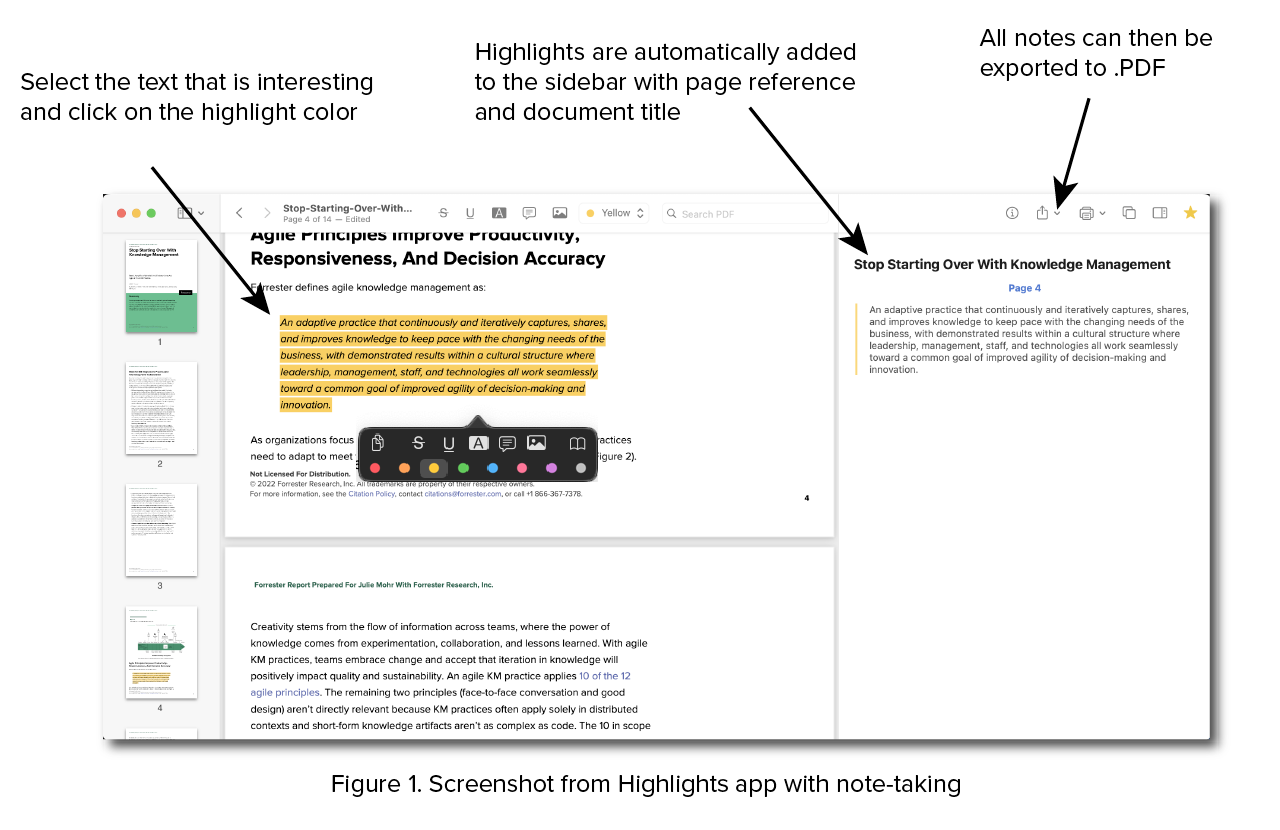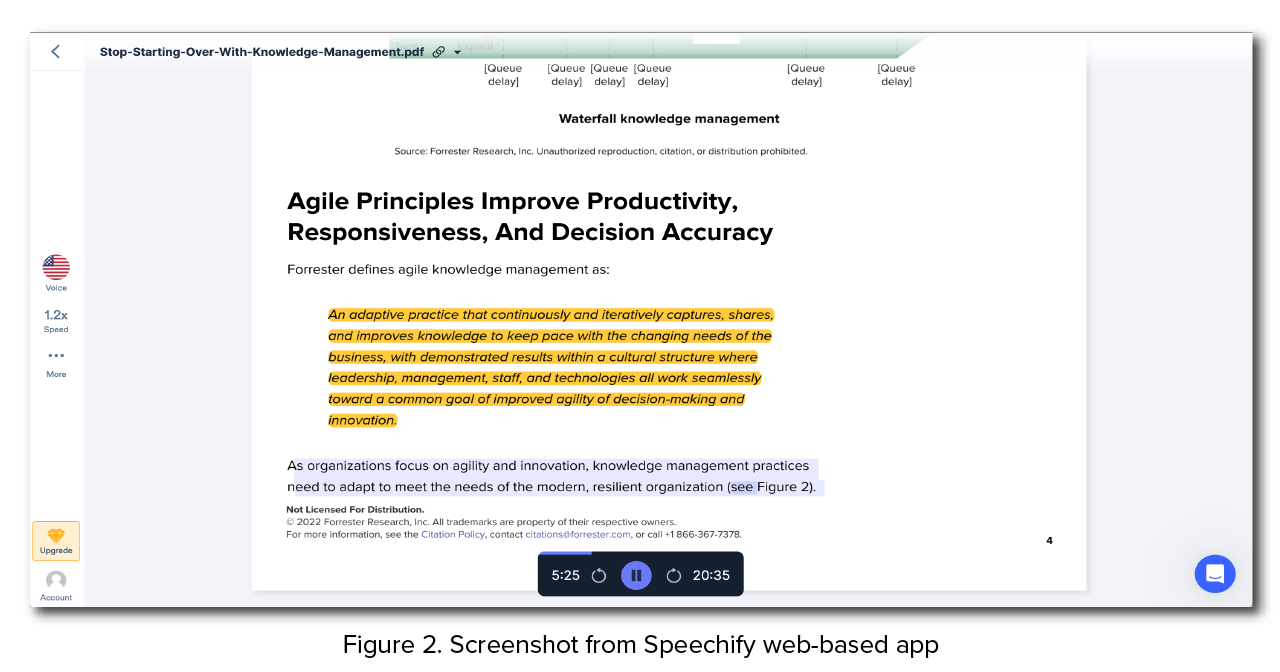Digitize Your Workflow For Sustainability And Accessibility
This blog is part two of a series of blogs on changing consumer behaviors and ways to reduce your carbon footprint. The first blog, Two Steps To Reduce Your Carbon Footprint With Smart Devices, IoT, And A Bit Of Patience, outlines how to reduce electric and gas consumption using smart devices in your home. In this blog, I look at digitizing an employee experience (EX) for the benefits of both sustainability and accessibility. While digitization is relatively easy with a broad technology landscape, making changes for sustainability or accessibility is much harder to do.
Outdated Way Of Working
Since college, I had a method for doing research. I would go to a library, search the archives, make copies of stuff I needed for reference, and then create a three-ring binder with my hole-punched reams of paper. I would sit in a quiet room with my highlighter, pen, and notepad, read the articles aloud, highlight the good bits, and summarize my findings with written notes in notebooks. As a multimodal learner, I had to combine multiple learning styles to master a topic. Sometimes, I would choose the best method based on a particular scenario. For technical topics, I often had to read, listen, and write things down before I could retain the knowledge. My print, read aloud, highlight, and take notes method was a tried and proven approach that got me through two degrees and years as a writer.
Digital natives are much more comfortable navigating online resources, multitasking, and collaborating on virtual platforms. They grew up with technology and don’t rely on these outdated work methods. Digital immigrants are not born in the digital era and are typically slower to adopt new technologies and working methods. Holding on to outdated methods harms the environment. Printing documents leads to deforestation, consumes energy, wastes water during paper processing, and creates substantial e-waste and paper waste without proper recycling. There are also concerns during the manufacturing of the toner and ink cartridges as workers are exposed to high levels of toxins.
Small Changes In Workflow With Digitization
Even in the digital age, I continued my old way of working: I searched the online library and internet for relevant research, downloaded .pdf files, printed, punched, and put them in binders. I continued to purchase printed books and built a vast library. But as the research aged and projects changed, the paper was shredded and sent to recycling plants, and the books collected dust on the shelf. I had convinced myself that printing and working with a pen, taking notes, and using a highlighter were part of my “process” that couldn’t be digitized. Working on a digital device all day and into the night is damaging to your eyes and health. But in the face of increasing environmental impact, I had to change. I needed something for my learning style that would not only provide me with a diversity of learning methods but also help me retain knowledge.
A small investment in assistive technologies could mean a huge boost in productivity for all employees. While technologies such as screen and PDF readers, project organizing tools, and voice command tools can improve the productivity of employees with disabilities, those without disability could also utilize these technologies to boost their work. Assistive technologies do not have to be viewed through the lens of a small, targeted group of individuals but as a productivity tool that will bring positive change to all employees.
Corporate Changes In Attitude Toward Accessibility
Moving from pen and paper to a digitized workflow has many benefits for sustainability and accessibility. By moving to a digital format, individuals interact with content more effectively and equitably. Whether it is screen readers or customizable text for those who are visually impaired, a digitized workflow can cater to a wider range of requirements. For those with dyslexia (one of the most common learning disabilities in the US) and many others, reading can be a long and drawn-out task. However, when we can listen to the document while reading, the rate at which we can read is heightened, and comprehension is improved.
Why think about accessibility? A staggering one in five youths will be diagnosed with a learning disability, queuing up a workforce that can thrive with the help of a workplace that will help them adapt. Prepare yourself for this shift by injecting accessibility into your digital strategy. We have seen a significant shift in the last few years, with executives saying that they are committed to creating accessible products, but this must extend to the internal customer, your employees. The rise of the digital employee experience has opened the door to improving the experience of all employees, regardless of disability.
Moving From Paper To PDFs And Digital Highlighting
Finding the right software that seamlessly allowed me to mimic my process was challenging. While a .pdf provides the capability to highlight text, moving the highlights out of the .pdf and into a notes file was time-consuming, with a perpetual process of copying from the .pdf and pasting into a Word .docx file. Then, I discovered an app called Highlights. With this application, I now have a succinct way to replicate my paper process. I research my topic, download a .pdf, read and highlight, and then export my notes (complete with auto-tagging for source and page number) to a .pdf. Then I delete the original .pdf to preserve copyright laws; all I have left is my notes file summarizing and notating direct quotes and the source. This successfully replicated the print, read, take notes, and citations parts of my process.

From Read Out Loud To Audio Files
After moving to Highlights, I realized that my retention differed from the paper method. I knew that if I couldn’t find a way to ensure better retention, I was likely to go back to my old method. A big part of what was missing was reading out loud, which was integral to my retention. What if I have software read to me? Would it be the same? Replicating this part of the process took a lot of trial and error.
I tried Adobe’s reading capabilities, and it was OK. However, the software read all text on a page, including footers, and didn’t work well with two-column research reports or locked .pdf files. It jumped all over the place and ruined the stream of thought. I tried exporting from the .pdf to a Word .docx and using Word’s read-aloud capabilities. This was better, but sometimes documents were locked or didn’t export correctly, and the process was time-consuming. The app that worked best for me was Speechify. I could set up the app in the background (or on a second monitor) to read the .pdf while I followed along with my digital highlighter in the Highlights app.

Accessibility With Text-To-Speech
Text-to-speech is an incredible asset for an organization’s accessibility strategy. However, not all platforms are created equal regarding compatibility with assistive technology. The screen reader’s success and ability hinges on a few things:
- Complex document format. PDFs pose an issue because they lack proper text labels, don’t include alternative text for images, and lack logical reading order, which can hinder the screen reader’s ability to navigate the document.
- Dynamic content. Interactive elements and single-page applications make it difficult for screen readers because they inhibit the accuracy and ability to interpret the changes on the page.
- Lack of standardization. There are document formats and platforms that don’t adhere to the widely accepted digital accessibility standards. Screen readers are designed to follow established guidelines and encounter great difficulty interacting with content that deviates from the standard.
When choosing a text-to-speech platform, ask questions about its compatibility with assistive technologies. One way to do this is by submitting a Voluntary Product Accessibility Template (VPAT) during the RFP process. The purpose of this document is to help you evaluate how the product or service addresses accessibility standards. Government organizations and federal agencies must use VPATs before procuring any new product or service. This ensures that the vendor is adhering to the standard Web Content Accessibility Guidelines (WCAG), an internationally recognized standard for digital accessibility. Building an accessible environment from the beginning will bring down the cost of accessibility and allow for a solution that helps employees, rather than rushing to fix it after the fact.
Adapting For Sustainability Doesn’t Always Mean Improving Accessibility
Over the years, I have realized that my multimodal learning style was slower than what many of my peers would do. My methods were developed out of a necessity to learn and a fear of test-taking. While my pace of learning was slower, I generally had much higher retention. While going all-digital is good for the planet, it has impacted my mental health. Leaving the laptop behind and reading in the garden with a tablet provides some diversity, but in this digital age, we spend far too much time looking at screens. Without a break, it feels like I hit the point of cognitive overload much faster than when I read from the printed page and used a highlighter.
Adapting technology to accommodate individual needs is vital to all knowledge workers’ productivity and sustainability, especially those needing an adaptive work environment. For many knowledge workers who grew up before technology was so invasive, the challenge is finding the right technologies to replace the old ways of working. While it may take some time and effort to do so, the earth and all of the digital natives thank you.
Let’s Connect
Have questions? That’s fantastic. Let’s connect and continue the conversation! Please reach out to me through social media or request a guidance session. Follow my blogs and research at Forrester.com.
This blog was written with the assistance of Christopher Langlois, senior research associate.
